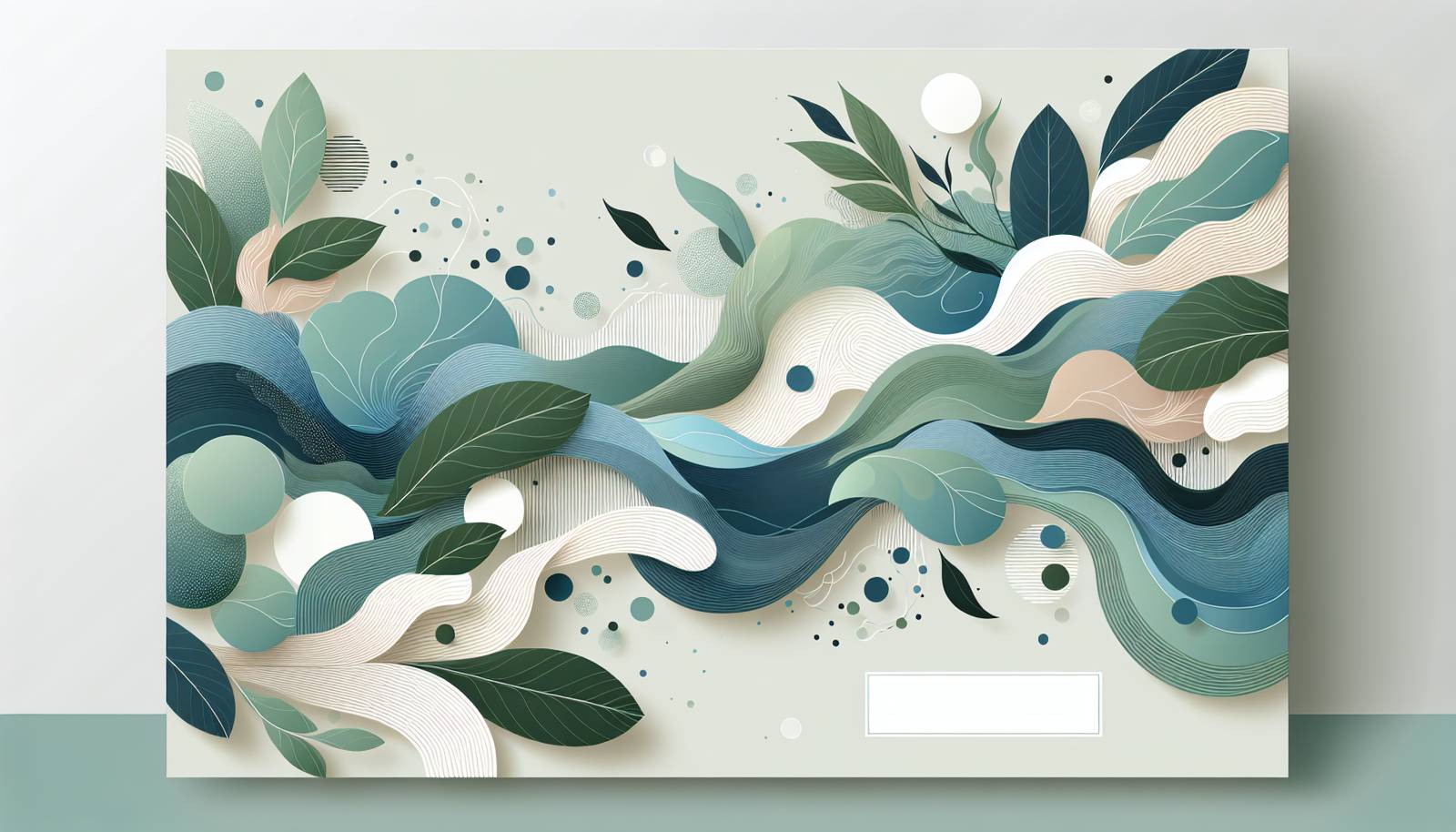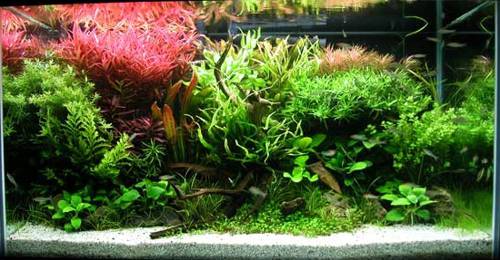
FAQ About Aquascaping with Indoor Plants

What is aquascaping with indoor plants?
Aquascaping with indoor plants is the artistic arrangement of underwater and terrestrial plants within an aquarium setting. This practice integrates both aquatic plants and regular houseplants to create visually appealing, naturalistic aquatic landscapes designed to mimic beautiful water bodies like lakes or rivers inside home environments.

Can I use any indoor plants for aquascaping?
Not all indoor plants are suitable for aquascaping. It's important to select plants that can thrive in humid environments such as peace lilies, pothos, or certain types of ferns. These plants are usually placed with roots submerged in water while their foliage remains above the water surface in paludariums or ripariums.

What are some benefits of aquascaping with indoor plants?
Incorporating indoor plants into aquascaping can provide several benefits, including improved water quality through natural filtration, enhanced aesthetics, and the promotion of a more balanced ecosystem within the aquarium. Indoor plants can help absorb toxins and nitrates from the water, thus contributing to healthier conditions for aquatic life.

What equipment is necessary for aquascaping with indoor plants?
The basic equipment needed for aquascaping with indoor plants includes an aquarium tank, a suitable substrate, lighting appropriate for plant growth, a filtration system that can support both aquatic and terrestrial plants, and possibly CO2 injection for certain plant species. Additionally, tools for planting and maintaining the plants may also be needed.

How do I choose the right lighting for my aquascaped aquarium?
Selecting the correct lighting for an aquascaped aquarium depends on the types of plants used and their specific lighting requirements. Generally, LED lights are a popular choice due to their energy efficiency and ability to support plant growth. It's important to provide a balance of light intensity and duration to mimic natural light conditions, often around 8-10 hours a day.

What is the best type of substrate for aquascaping with indoor plants?
The best substrate for aquascaping varies depending on plant species but typically includes nutrient-rich soil that supports root growth. Common choices are aquasoil, gravel, or sand mixed with nutrient supplements. A quality substrate is crucial for supplying the plants with necessary nutrients to thrive.

How do I integrate terrestrial plants in an aquascaping setup?
To integrate terrestrial plants in aquascaping, such as in a paludarium, plants like pothos or ferns can have their roots submerged in water while leaves remain above. Ensure they are placed in positions where humidity and light conditions are optimal for their growth, perhaps using ledges or rocks for support.

Are there any specific maintenance tasks required for aquascaping?
Maintenance tasks for aquascaping include regular water changes, trimming and pruning plants to control overgrowth, cleaning algae buildup, and checking filtration systems. Monitoring water parameters such as pH and nutrient levels is also essential to ensure a healthy environment for both plants and aquatic life.

Can aquascaping help in reducing algae growth in aquariums?
Yes, aquascaping can help reduce algae growth. By maintaining a balance of nutrients and light in the aquarium, healthy plants can outcompete algae for resources such as light and nutrients, thus limiting its growth. Additionally, certain plant species can absorb excess nutrients that might otherwise fuel algae proliferation.

How does aquascaping contribute to aquarium life sustainability?
Aquascaping supports sustainability in aquariums by creating a balanced ecosystem where plants and aquatic animals can thrive. Plants act as natural filters, oxygen providers, and habitat structures, which can decrease reliance on artificial filtration systems and enhance the overall health and stability of the aquarium environment.

What challenges might arise in aquascaping with indoor plants?
Challenges in aquascaping with indoor plants include managing water quality, dealing with plant-specific requirements such as lighting and nutrients, and preventing overgrowth which can lead to reduced water flow and light penetration. Another challenge is finding the right balance between aquatic and terrestrial plants to ensure neither is negatively impacted.

What are some creative themes for aquascaping with indoor plants?
Creative themes for aquascaping include Japanese-inspired Zen gardens, biotopes that mimic specific natural habitats, or artistic representations like jungles or waterfalls. These themes can guide the selection of plants, rocks, and wood to craft a cohesive and visually compelling aquatic landscape.

How does the choice of fish impact aquascaping with indoor plants?
The choice of fish in an aquascape is important as it affects both the aesthetic and ecological balance. Fish species should complement the plant setup, not harm plants, and thrive in the same environmental conditions. For example, smaller, peaceful fish like tetras or rasboras often pair well with planted aquascapes.

What role do CO2 injections play in aquascaping?
CO2 injections can be beneficial in aquascaping for promoting healthy plant growth, especially in setups with high light. Carbon dioxide is a critical component of photosynthesis, and supplementing CO2 can enhance plant vigor, leading to thicker foliage and brighter colors. However, it's important to monitor CO2 levels to avoid harm to fish.

Is aquascaping with indoor plants suitable for beginners?
Aquascaping with indoor plants can be suitable for beginners if they start with simple setups and hardy plant species. It's essential to understand basic aquarium maintenance and plant care principles. Starting with low-tech setups, which don't need CO2 injections or complex lighting systems, can be more manageable for newcomers.

How can I prevent mold or rot in aquascaped indoor plants?
Preventing mold or rot involves managing humidity levels and ensuring good air circulation around terrestrial parts of the plants. Avoid water stagnation by ensuring adequate water movement and maintain proper lighting to prevent damp conditions that foster mold growth.

Can aquascaping integrate both live plants and artificial decor?
Yes, aquascaping can integrate both live plants and artificial decor, allowing for artistic flexibility and stability in design. Live plants can enhance the natural aspect and ecological stability of the aquarium, while artificial decor can add structural elements that may be difficult to achieve with live plants alone.

What are common mistakes to avoid in aquascaping with indoor plants?
Common mistakes include overcrowding plants without considering growth and light needs, neglecting regular maintenance such as pruning and cleaning, and failing to balance light, nutrients, and CO2 levels. Inadequate research on specific plant and fish requirements can also lead to unsuccessful aquascapes.

How is a riparium different from a traditional aquascaped tank?
A riparium focuses on emulating riverbank conditions, where both aquatic and terrestrial plants can interact. It often includes a higher portion of its contents above water level, including emersed plants and sometimes even semi-aquatic life, whereas a traditional aquascape is fully submerged and may not involve terrestrial elements.

What is the importance of water parameters in aquascaping with indoor plants?
Water parameters such as pH, hardness, and nutrient levels are critical in aquascaping as they directly affect plant and fish health. Properly balanced water conditions promote healthy plant growth, prevent algae blooms, and ensure the well-being of the aquatic ecosystem.
